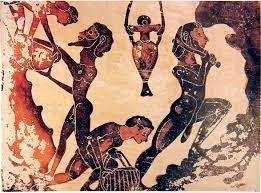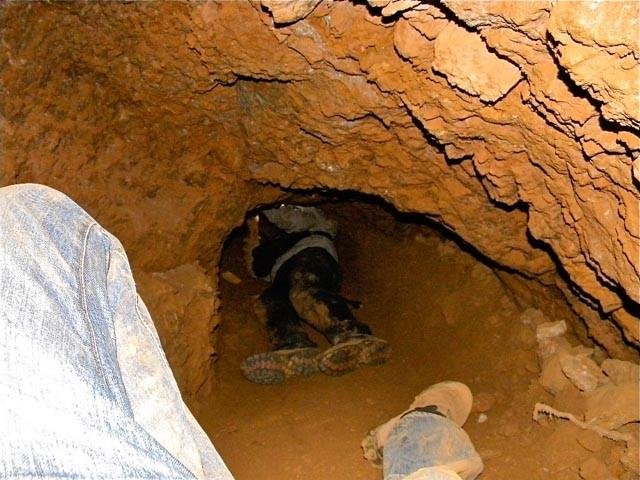a prehistoric mine in Africa

Based on archaeological records, the world's oldest mine is the Lion Caves located in Swaziland, South Africa. Once tested radiokarbon, the old mine came from 43,000 years ago. This prehistoric mine was used by the then-resident or Palaeolithic ancestor to mine the "flint" and the metal used to make a device. Operating a mine is not an easy thing. All prehistoric mines require supporting infrastructure, including specialist labor and equipment (picks, scaffolds, artificial lighting), workers, food, clothing, trade networks, and so on.
In the "Lion Cave" in Swaziland, the ancient miners built a 25-foot tunnel, 30 feet deep, and 20 feet high. The tunnel is 500 feet long. Apparently, this mining activity was stopped when there were 5 tons of rocks falling from the roof of the tunnel and blocking the entrance.
One of the interesting things about Lion Caves is that the mine is a pigment mine. Mining of red ocher, pigments by primitive people as body paint for their rituals. The amount of material moved is quite impressive. Approximately 50-100 tons are regularly mined.


In addition to Lion Caves, red ocher mines in the Paleolithic period are at Olduvai Gorge in Tanzania, Ambrona in Spain, Terra Amata in France, and Becov in Czechoslovakia. The use of ocher appears to have increased during the Middle Paleolithic period in the Mousterian tradition and became common in the Paleolithic period. The red ocher is also used for smelting iron before the second milinium.
Some early examples of mining for deer (flint) also originated from along the Nile basin in Egypt. In that place many ex-mines have been discovered from the Palaeolithic period that is about 38000 BC - 33000 BC. But the possibility of mining in the Nile River Valley is older. There are four old mining sites reported around the Nile, Qena and Nazlet Safaha that have existed since 50,000 years ago, while Nazlet Khater and Beit Allam, have existed since 60,000 years ago. All the old mining sites are stone quarries .
Ancient Egyptian civilization has also mined bronzes in Maadi. At first, Egyptians used bright green bronze stones for the decoration of manuscripts and pottery. Then, between the time of 2613 BC and 2494 BC, when there was a large building project, Egypt needed a lot of natural resources, but unfortunately the resources were not available in Egypt. So the Egyptians did an expedition to other areas to look for turquoise rocks.
Mining for turquoise and copper is found in areas called Wadi Hamamat, Tura, Aswan and various sites owned by the Nubian people in the Sinai Peninsula and in Timna. Mining of precious stones and metals in Egypt took place in the early dynasty. The Nubian gold mine is the largest and largest of the mines in Ancient Egypt. They use fire tricks to break the hard gold rock. Gold will be crushed to powder or dust before it is formed.
Awesome post. Im in SA but havent been there yet. Add it to my to do list 👍
Thanks for your work sir @parkyingnam Love it. Followed...
I like your post. @parkyingnam I have followed you
I applaud standing @parkyingnam
